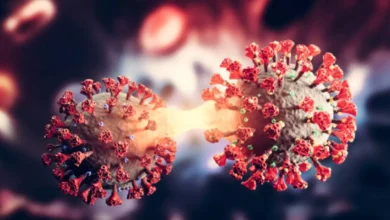 |
| The SpaceX Starship Human Landing System Concept for Artemis III Mission |
Planting the Seeds of Change: The LEAF Project Takes Root
Leading the charge in this lunar agricultural revolution is NASA’s “Lunar Effects on Astronaut Flora” (LEAF) project. This pioneering initiative aims to establish miniaturized greenhouses on the lunar surface, creating a controlled environment for plant growth. Imagine astronauts meticulously tending to these miniature gardens, nurturing the first sprigs of life to sprout beyond Earth’s atmosphere. The implications for future space exploration and potential lunar settlements are truly awe-inspiring.
Lunar Dirt: A Challenge for Terrestrial Crops
But growing crops on the Moon presents a unique set of challenges. Unlike the fertile soil we have on Earth, lunar regolith (moon dust) is devoid of organic matter and essential nutrients for plant growth. It’s also exposed to harsh radiation and extreme temperature fluctuations. So, how do scientists plan to overcome these obstacles?
Innovation Takes Root: Creating a Lunar Oasis
The LEAF project scientists are tackling these challenges head-on:
- Nutrient-Rich Substrates: Astronauts will utilize specially designed substrates enriched with essential nutrients and minerals, providing a foundation for plant growth in the lunar environment.
- Hydroponics or Aquaponics: These water-based cultivation techniques are being explored as they minimize the need for traditional soil and allow for efficient resource management.
- Controlled Lighting Systems: LED lights within the greenhouses will simulate the Earth’s light spectrum, ensuring optimal growth conditions for the chosen plant varieties.
Planting the Right Seeds: Choosing the Lunar Pioneers
Selecting the right plant species is crucial for the success of the LEAF project. Here are some characteristics scientists are looking for:
- Fast Growth Rate: Plants that mature quickly will be ideal for maximizing harvests within the limited duration of the Artemis III mission.
- Stress Tolerance: The chosen plants need to be resilient enough to withstand the harsh lunar environment, including radiation and extreme temperatures.
- Nutritional Value: Prioritizing plants rich in vitamins and minerals will be essential for supplementing the astronauts’ diet on their lunar stay.
Early Contenders for Lunar Farming:
While the final selection is yet to be determined, some potential candidates for lunar cultivation include:
- Duckweed: This fast-growing aquatic plant thrives in nutrient-rich water and is a good source of protein.
- Thale Cress: A small flowering plant, thale cress is known for its rapid growth and tolerance of harsh environments.
- Microgreens: These nutrient-dense baby vegetables offer a high yield within a short time frame.
The Long-Term Vision: A Sustainable Future in Space
The success of lunar farming on Artemis III could pave the way for a future where astronauts can grow their own food on long-duration space missions. Imagine self-sustaining lunar bases with greenhouses producing fresh produce, reducing reliance on supplies from Earth and increasing mission autonomy. This could be a game-changer for establishing a permanent human presence on the Moon and beyond!
Beyond Artemis III: The Future of Lunar Agriculture
The knowledge gleaned from the LEAF project will be invaluable for future lunar exploration endeavors. Here are some exciting possibilities:
- Developing Closed-Loop Systems: Future lunar greenhouses might incorporate recycling systems for water and waste, creating a truly self-contained environment.
- Large-Scale Lunar Farms: As lunar settlements become more established, larger greenhouses could be deployed to meet the needs of a growing population.
- Terraforming Dreams: Lunar agriculture could be a stepping stone towards terraforming the Moon – gradually creating a more Earth-like environment that could one day support a wider variety of life.
Join the Conversation: Are We Ready to Farm the Moon?
The prospect of lunar farming is a captivating one, filled with both scientific challenges and exciting possibilities. Here’s what you can do:
- Stay Informed: Follow NASA’s updates on the Artemis program and the LEAF project to learn more about their progress.
- Engage in the Discussion: Join online forums and communities to share your thoughts on the future of lunar agriculture and its potential impact on space exploration.
- Imagine the Future: Let your imagination run wild! How do you envision lunar farms evolving in the coming decades?
The Artemis III mission and its pioneering lunar farming initiative mark a significant milestone



